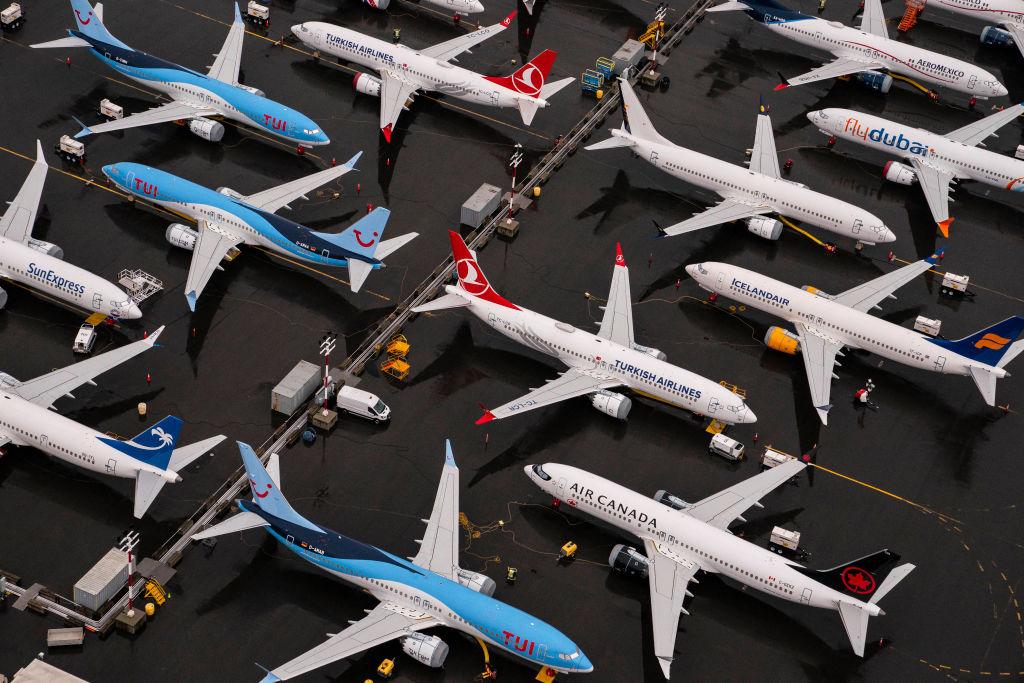Inspections Find More Electrical-Grounding Issues On Boeing 737 MAXs

One week into a de facto partial fleet grounding, Boeing continues to evaluate the scale and needed steps to correct 737 MAX electrical system problems—an issue that extends beyond the area originally flagged by the manufacturer, Aviation Week has learned.
Boeing on April 8 told operators and the FAA of a grounding problem affecting standby power control units (SPCUs) on 737 MAXs built starting in early 2019. Further evaluation, including inspections of affected aircraft, has uncovered grounding issues in other areas, multiple industry sources confirmed.
One industry source with knowledge of the problems say they appear to be similar and are not considered complicated. But they will require inspections and modifications to ensure electrical ground paths exist on affected systems.
Timing of a service bulletin’s release and likely FAA mandate remain unclear, as does the scope of possible repairs. In its April 8 multi-operator message (MOM), Boeing said it was too early to project repairs, saying they could take from “a matter of hours or a few days.”
Boeing is working with customers on service bulletins that will be submitted to the FAA for approval. The bulletins focus on ensuring a sufficient ground path in the flight deck of affected airplanes.
The industry source confirmed Boeing and the FAA have been discussing possible paths forward for days, with the onus on the company to determine the scope and technical ramifications before the federal regulator can make any decisions.
“The FAA will thoroughly review any proposed fix that Boeing presents to us,” the agency said in a statement. It declined to comment further.
Boeing’s MOM recommended that affected customers “address a flight deck bonding and grounding issue prior to further operations” and urged them to wait for further instructions. Operators complied, voluntarily grounding affected aircraft. Aviation Week’s analysis of the affected line numbers listed by Boeing show that about 460 737 MAX are affected—89 of them in service with 16 operators. The rest are in Boeing’s undelivered inventory.
The affected in-service fleet reflects about 20% of all delivered 737 MAXs and 40% of the fleet that was active following a 21-month global grounding that ended in late 2020, according to Aviation Week Intelligence Network Fleet and Data Services. Safety officials in several countries, notably China and India, still have not approved the model’s return, however, and 737 MAXs cannot fly there until they do, regardless of when these newest issues are resolved.
Among countries where the 737 MAX can fly, “operators are not pushing for a quick resolution” to the latest issue, one airline source said. Among the reasons—available lift due to the COVID-19 demand decline and likely compensation from Boeing, the source said.
Southwest Airlines, which has the largest number of affected aircraft, suggested it is managing well without its grounded 737 MAXs. “We have more than 700 aircraft in our fleet, so we are experiencing minimal operational disruption from the grounding of these 30 aircraft,” a spokesperson for the carrier said.
Boeing traced the SPCU problem to a production-line change implemented in early 2019 involving fasteners and a coating. The problem can interrupt electrical ground paths, preventing the SPCU, located behind the right-side pilot’s seat, from working as designed, one airline source with knowledge of the issue explained. It is not clear if the other grounding issues, which the airline source said are also concentrated around the flight deck, stem from the same changes.
The SPCU controls the 737 standby power system—one of three main power divisions on the aircraft alongside the AC and DC systems. The standby system provides 115 volts AC and 28 volts DC to essential aircraft systems in the event of a loss of all engine or auxiliary power unit-driven AC sources. That makes its operation vital to ensuring safe flight and necessary for delivering airworthy aircraft.
It is not clear if the issues will affect the pace of 737 MAX deliveries. The manufacturer has handed over 62 737 MAXs in 2021, Aviation Week Intelligence Network Fleet data shows—part of its push to clear a stored backlog of about 460 aircraft built up during the grounding and delivery pause. No deliveries have been recorded since April 7—the day before operators were notified.
Boeing confirmed it is “addressing the issue with undelivered airplanes that are impacted.” The company declined to elaborate.
This story has been updated to remove a reference to wiring-related grounding issues, which was inaccurate.

